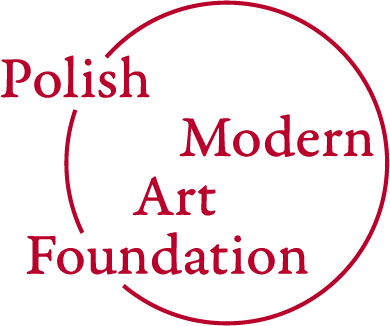Barnabás Bencsik
The exhibition of Hubert Czerepok deals with a very actual and very acutely precise topic: the intellectual and spiritual birth of radical and extremist politics. The exhibition deals with political views which are possessed by symptoms of obsession which can amplify into insanity and the also aims to identify the thin red line which divides rational thinking from irrational action. Czerepok is interested in the nature of that state of mind, which is aggressively expanding in political publicity and discourse and which is more and more loudly creating propaganda for previously intolerable populist, ethnocentric and xenophobic views.
Czerepok is examining the micro logics of the media, and the whole creative mind-industry run by obsessed which uses manipulative consumer mechanisms and information technology to supply masses with ideological, political, religious conspiracy theories, and misbeliefs which can escalate into fanaticism and the self-referential system of symbols of these constructions. The undepletable archives of social media images, which serve as a tool for self-representation and as bond-strengthener between the individual and the „messianistic” group, serve as the artist’s tools, because he aims to move these images out of their frightening and self-confident positions as he puts their conscious visual power between ironic quotation marks. Czerepok deconstructs in his artworks the manifestation of ethnic superiority within the classic narrative of nation states, which refers to an essentialist approach on history built upon ancient myths, and he re-contextualizes and reinterprets the ingredients of these, which contain toxic and dangerous ideological components.
The central piece of the exhibition is the 30 minute long video „Lux Aeterna” from 2011, which opposes an inner monologue of a man and images of sublime and untouched nature. Thus the artist creates a pompous and diffuse ideological remix, which is very close to the ideological narratives of radical and extremist political subcultures.
The video as a compact classical music composition with movements, articulates easily separable untis, with the different set of visual themes. The first section seems to be an unending car ride in the labyrinth of a tunnel system. Till the end of the tunnel trip we can hear a monologue, which collages and compiles texts from the irrational ideological manifestos of Hitler, Unabomber, Anders Breivik, together with pathetic texts and poems of romantic, patriotic politicians and authors, like Thomas Jefferson or Julius Słowacki.
The next visual section of the video depicts the grim and untouched mountains of the Norwegian fjords which also refers to a mystical connection to Nazi ideology, which articulated „Blut und Boden”, that is still a reference point for the approval of the xenophobia of different radical ideologies. The location of the video is the Norwegian Lofoten, which is maybe one of the most emblematic natural symbols from North-German mythology, and which legitimizes the adaptability of natural laws on the function of society for the believers of the ideology.
The proof that these thought-constructions are not without any consequences or that these irrational ideas are not only safe play of „glass beads”, is that Anders Behring Breivik, the far-right extreme terrorist – urged by such a mixture of irrational ideas – ruthlessly murdered 69 people with a rifle on the Norwegian island of Utoya while he was listening to the music of „Lux Aeterna”.
In the dark, in the space bordered by black curtains and beside the projected video, the other looming works shade also the critical interpretation of Czerepok. The figures which are outlined on the curtains depict political radicals in action, who are armoured by the iconography of their political identity, and who might be sinister forerunners of an aggressive darkness which is approaching us.
Czerepok was among the first artists, who reflected on the political reactions to the masses of migrants, who arrived to Europe last summer. His neon-installation entitled „The Fence” takes a sharp critical position towards the ruthless reaction of Hungarian politics. The work’s uniquely strong visuality reflects on the absurdity and fragility of the national and ethnic nature of the defensive reaction, which did manifest in the barbed wire fence built on the Serbian-Hungarian border.
Barnabás Bencsik
